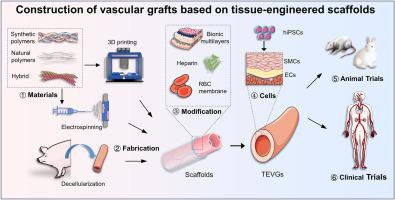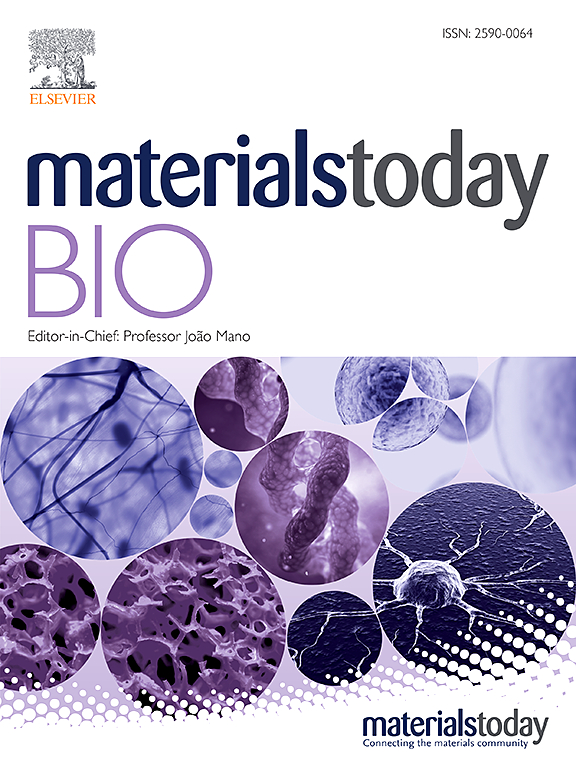Construction of vascular grafts based on tissue-engineered scaffolds
IF 8.7
1区 医学
Q1 ENGINEERING, BIOMEDICAL
引用次数: 0
Abstract
Cardiovascular disease (CVD) ranks among the leading causes of morbidity and mortality globally, primarily due to arterial occlusive disease. Vascular bypass remains the cornerstone of treatment; however, many patients lack suitable autologous vessels (e.g., saphenous vein) for grafting. Tissue-engineered vascular grafts (TEVGs) provide a viable alternative capable of integrating, remodeling, and repairing host vessels, responding to mechanical and biochemical stimuli. Currently, preparation methods for TEVGs are mainly categorized into scaffold-free and scaffold-based approaches. Scaffold-free methods exhibit comparatively weaker mechanical properties and limited research progress, whereas scaffold-based approaches show more promising applications due to their superior mechanical properties and biocompatibility. This review examines current research progress in materials, fabrication processes, functionalized modifications, cell implantation, and animal and clinical experiments for scaffold-based preparation of TEVGs. By exploring current challenges and future perspectives in this field, we expect to provide new insights into TEVGs development and expedite their clinical applications.

基于组织工程支架构建血管移植物
心血管疾病(CVD)是全球发病率和死亡率的主要原因之一,主要由动脉闭塞性疾病引起。血管搭桥仍然是治疗的基础;然而,许多患者缺乏合适的自体血管(如大隐静脉)进行移植。组织工程血管移植物(TEVGs)提供了一种可行的替代方法,能够整合、重塑和修复宿主血管,并对机械和生化刺激做出反应。目前,TEVGs 的制备方法主要分为无支架和基于支架的方法。无支架方法的机械性能相对较弱,研究进展有限;而基于支架的方法因其优越的机械性能和生物相容性,应用前景更为广阔。本综述探讨了目前在基于支架制备 TEVGs 的材料、制造工艺、功能化修饰、细胞植入以及动物和临床实验等方面的研究进展。通过探讨该领域当前面临的挑战和未来前景,我们希望能为 TEVGs 的开发提供新的见解,并加快其临床应用。
本文章由计算机程序翻译,如有差异,请以英文原文为准。
求助全文
约1分钟内获得全文
求助全文
来源期刊

Materials Today Bio
Multiple-
CiteScore
8.30
自引率
4.90%
发文量
303
审稿时长
30 days
期刊介绍:
Materials Today Bio is a multidisciplinary journal that specializes in the intersection between biology and materials science, chemistry, physics, engineering, and medicine. It covers various aspects such as the design and assembly of new structures, their interaction with biological systems, functionalization, bioimaging, therapies, and diagnostics in healthcare. The journal aims to showcase the most significant advancements and discoveries in this field. As part of the Materials Today family, Materials Today Bio provides rigorous peer review, quick decision-making, and high visibility for authors. It is indexed in Scopus, PubMed Central, Emerging Sources, Citation Index (ESCI), and Directory of Open Access Journals (DOAJ).
 求助内容:
求助内容: 应助结果提醒方式:
应助结果提醒方式:


